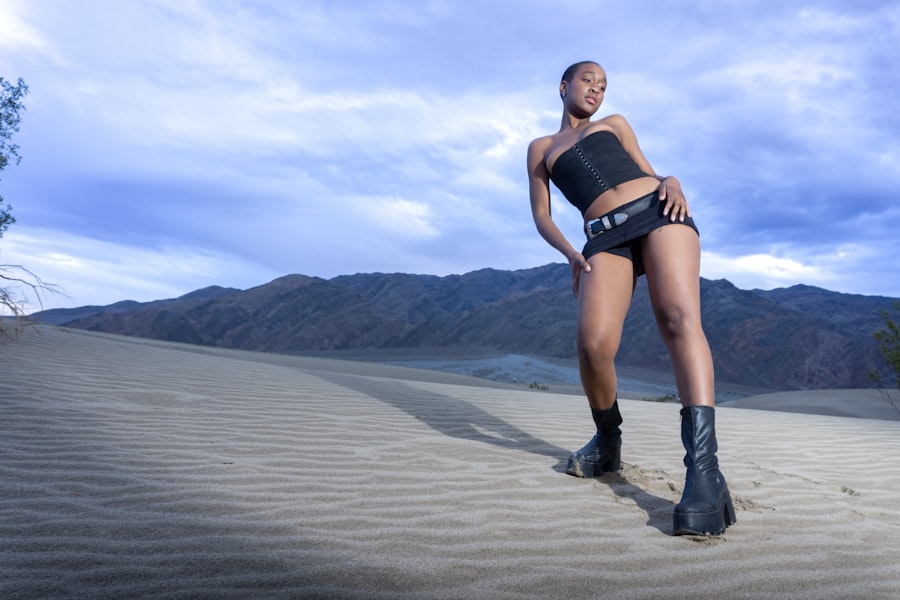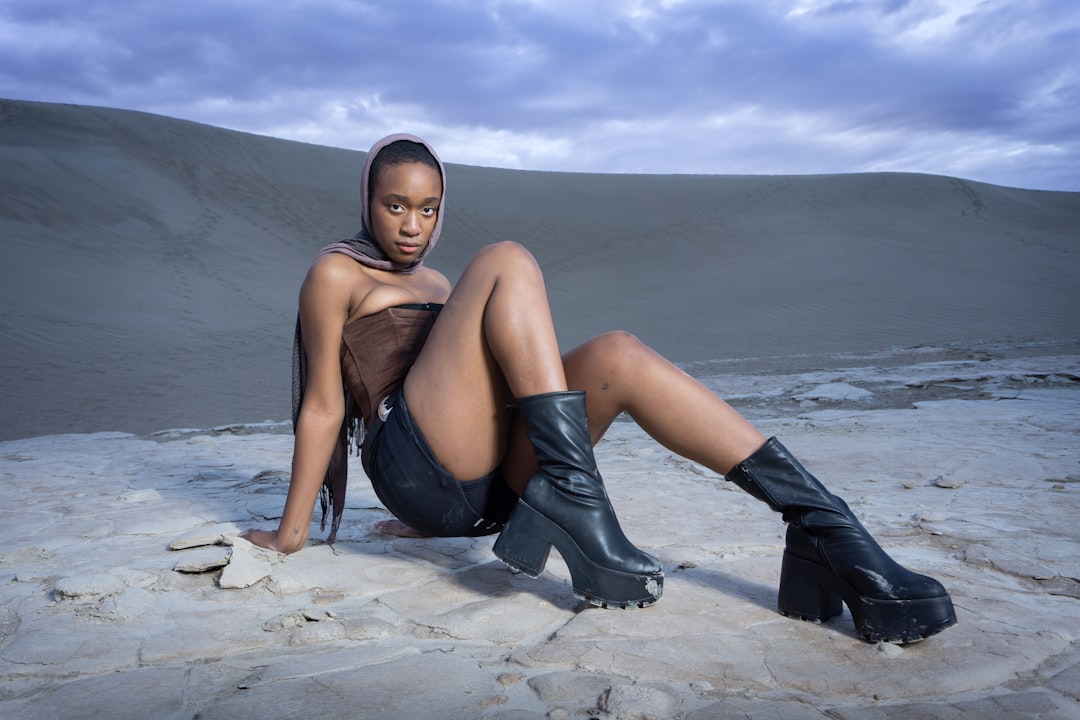Personal style is an intricate tapestry woven from various threads of individual preferences, cultural influences, and lifestyle choices. It is not merely about the clothes one wears but rather an expression of identity and self-confidence. To truly understand your personal style, it is essential to reflect on what resonates with you.
This involves examining your wardrobe and identifying pieces that make you feel empowered and comfortable. Consider the colors, fabrics, and silhouettes that you gravitate towards. Are you drawn to bold patterns and vibrant hues, or do you prefer a more subdued palette with classic cuts?
Moreover, understanding your personal style requires an exploration of your lifestyle and daily activities. For instance, someone who works in a corporate environment may lean towards tailored suits and polished shoes, while a creative professional might favor eclectic outfits that showcase their artistic flair. Additionally, personal style can evolve over time, influenced by life experiences, travel, and exposure to different cultures.
Keeping a style journal or creating a mood board can be beneficial in tracking these changes and refining your aesthetic. By embracing your unique preferences and allowing them to guide your fashion choices, you can cultivate a personal style that is both authentic and empowering.
Key Takeaways
- Understanding your personal style is essential for creating a wardrobe that reflects your personality and makes you feel confident.
- The importance of proper fit cannot be overstated, as ill-fitting clothes can detract from your overall look and comfort.
- Incorporating trends into your wardrobe can add a modern touch, but it’s important to do so in a way that still aligns with your personal style.
- Building a versatile wardrobe with key pieces that can be mixed and matched for different occasions is a smart and practical approach to fashion.
- Accessorizing is a great way to elevate your look and add personality to your outfits, whether it’s with jewelry, scarves, or other accessories.
The Importance of Proper Fit
The fit of clothing is arguably one of the most critical aspects of fashion that can make or break an outfit. No matter how stylish a garment may be, if it does not fit well, it can detract from the overall appearance. Proper fit enhances the silhouette, accentuates the body’s best features, and provides comfort throughout the day.
For example, a well-tailored blazer can elevate a simple outfit by creating a structured look that flatters the figure. Conversely, an ill-fitting piece can lead to discomfort and self-consciousness, overshadowing even the most fashionable ensemble. Understanding the nuances of fit involves recognizing the different body shapes and proportions.
Each individual has unique measurements that dictate how clothing should be tailored to achieve the best look. For instance, someone with a pear-shaped body may benefit from A-line skirts that cinch at the waist and flow over the hips, while an athletic build might look great in fitted tops that highlight the shoulders. Investing in alterations can be a game-changer; even inexpensive clothing can appear high-end when adjusted to fit perfectly.
Therefore, prioritizing fit is essential for anyone looking to enhance their wardrobe and present themselves confidently.
Incorporating Trends into Your Wardrobe

Fashion trends are ever-evolving, often influenced by cultural shifts, technological advancements, and social movements. While it can be tempting to adopt every new trend that emerges, it is crucial to approach them with discernment. Incorporating trends into your wardrobe should enhance your personal style rather than overshadow it.
One effective strategy is to select a few key pieces each season that resonate with your aesthetic and can be seamlessly integrated into your existing wardrobe. For example, if oversized silhouettes are trending, consider investing in an oversized denim jacket that can be layered over various outfits. Another approach is to incorporate trends through accessories or smaller items rather than committing to full outfits.
This allows for experimentation without overwhelming your personal style. For instance, if bold prints are in vogue, try adding a patterned scarf or statement earrings to your look. This method not only keeps your wardrobe fresh but also allows you to express creativity without straying too far from your established style.
Ultimately, the goal is to strike a balance between staying current and remaining true to yourself.
Building a Versatile Wardrobe
| Category | Metric |
|---|---|
| Clothing | Number of tops |
| Clothing | Number of bottoms |
| Clothing | Number of dresses/suits |
| Accessories | Number of shoes |
| Accessories | Number of bags |
| Accessories | Number of scarves/belts |
| Colors | Number of neutral colors |
| Colors | Number of statement colors |
A versatile wardrobe is the cornerstone of effective personal styling, allowing for endless outfit combinations while minimizing clutter. The foundation of such a wardrobe consists of timeless pieces that can be dressed up or down depending on the occasion. Classic items like a tailored blazer, a little black dress, well-fitted jeans, and quality white shirts serve as building blocks for countless outfits.
These staples can be mixed and matched with trendier items or accessories to create looks suitable for various settings. When curating a versatile wardrobe, it is essential to consider fabric choices and color palettes that complement each other. Neutral colors such as black, white, gray, and beige provide a solid base that can easily be paired with bolder hues or patterns.
Additionally, investing in quality over quantity ensures that each piece withstands the test of time both in terms of durability and style. For instance, a well-made pair of leather boots can transition from casual outings to formal events with ease. By focusing on versatility and quality, you can create a wardrobe that not only meets your daily needs but also reflects your personal style.
Accessorizing to Elevate Your Look
Accessories play a pivotal role in transforming an outfit from ordinary to extraordinary. They provide an opportunity for self-expression and creativity while allowing individuals to personalize their looks without overhauling their entire wardrobe. The right accessories can add depth and interest to even the simplest outfits.
For example, pairing a basic white tee with statement jewelry or a vibrant handbag can elevate the overall appearance significantly. When selecting accessories, consider how they complement your outfit and reflect your personality. A bold necklace can serve as a focal point for a minimalist ensemble, while layered bracelets can add texture and dimension to casual wear.
Additionally, accessories such as belts can define the waistline and create flattering silhouettes. Hats, scarves, and sunglasses not only serve practical purposes but also contribute to the overall aesthetic of an outfit. By thoughtfully incorporating accessories into your looks, you can enhance your personal style and make a lasting impression.
Dressing for Different Occasions

Understanding how to dress appropriately for various occasions is essential for projecting confidence and professionalism. Each event comes with its own set of expectations regarding attire, whether it’s a formal wedding, a casual brunch with friends, or a corporate meeting. The key is to strike a balance between adhering to dress codes while still expressing your personal style.
For instance, at a formal event like a wedding, opting for an elegant gown or tailored suit allows you to respect the occasion while accessorizing in a way that reflects your individuality. In more casual settings, such as weekend outings or social gatherings, comfort becomes paramount without sacrificing style. A chic pair of tailored trousers paired with a stylish top can create an effortlessly polished look suitable for various informal occasions.
Understanding the nuances of dressing for different events also involves being aware of cultural norms and expectations; what may be acceptable in one context could be inappropriate in another. By being mindful of these factors while remaining true to your personal style, you can navigate any occasion with grace and confidence.
Utilizing Color and Patterns
Color and patterns are powerful tools in fashion that can significantly influence mood and perception. Understanding how to effectively use color in your wardrobe allows you to convey emotions and messages without saying a word. For instance, wearing bright colors like yellow or red can evoke feelings of happiness and energy, while softer tones like pastels often convey calmness and serenity.
Additionally, certain colors may complement specific skin tones better than others; warm undertones might shine in earthy hues like terracotta or olive green, while cool undertones may look stunning in jewel tones like sapphire or emerald. Patterns also play an essential role in adding visual interest to outfits. Stripes can create an illusion of height or width depending on their orientation; floral prints often evoke femininity; while geometric patterns can lend a modern edge to any look.
Mixing patterns can be an exciting way to showcase creativity; however, it requires some finesse to ensure harmony within the ensemble. A general rule of thumb is to pair bold patterns with more subdued ones or use varying scales of patterns together for balance. By mastering the art of color and pattern utilization, you can enhance your wardrobe’s versatility while expressing your unique personality.
Working with a Professional Fashion Stylist
Collaborating with a professional fashion stylist can be an invaluable investment for those seeking to refine their personal style or navigate complex fashion choices. A stylist brings expertise in understanding body types, color theory, current trends, and how to curate outfits that align with individual preferences and lifestyles. This personalized approach allows clients to discover new styles they may not have considered while ensuring that their wardrobe remains cohesive and functional.
The process typically begins with an initial consultation where the stylist assesses the client’s current wardrobe and discusses their goals and preferences. From there, they may suggest new pieces that complement existing items or recommend alterations for better fit. Additionally, stylists often provide guidance on how to mix and match outfits effectively for various occasions—an invaluable skill for anyone looking to maximize their wardrobe’s potential.
By leveraging the knowledge of a professional stylist, individuals can gain confidence in their fashion choices while developing a signature style that truly reflects who they are.
FAQs
What is professional fashion styling?
Professional fashion styling involves creating and coordinating outfits for individuals or groups for various occasions, such as photo shoots, events, or everyday wear. It involves understanding the latest fashion trends, body types, and personal preferences to create a cohesive and stylish look.
What does a professional fashion stylist do?
A professional fashion stylist helps clients develop their personal style, selects clothing and accessories for them, and creates outfits that suit their body type and the occasion. They may also work on photo shoots, fashion shows, or editorial spreads, and collaborate with photographers, designers, and makeup artists.
What skills are required to become a professional fashion stylist?
To become a professional fashion stylist, one needs to have a strong sense of style, knowledge of fashion trends, excellent communication and interpersonal skills, and the ability to understand and work with different body types and personal preferences. Creativity, attention to detail, and the ability to work under pressure are also important skills for this profession.
How can someone become a professional fashion stylist?
One can become a professional fashion stylist by pursuing a degree in fashion design, fashion merchandising, or a related field. Additionally, gaining experience through internships, assisting established stylists, and building a strong portfolio are important steps in entering the industry. Networking and staying updated on fashion trends are also crucial for success in this field.
What are the career opportunities for professional fashion stylists?
Professional fashion stylists can work in various settings, including fashion magazines, retail stores, advertising agencies, and with individual clients. They may also specialize in areas such as celebrity styling, editorial styling, or personal shopping. Additionally, some stylists may choose to start their own styling business or work as freelance stylists.
